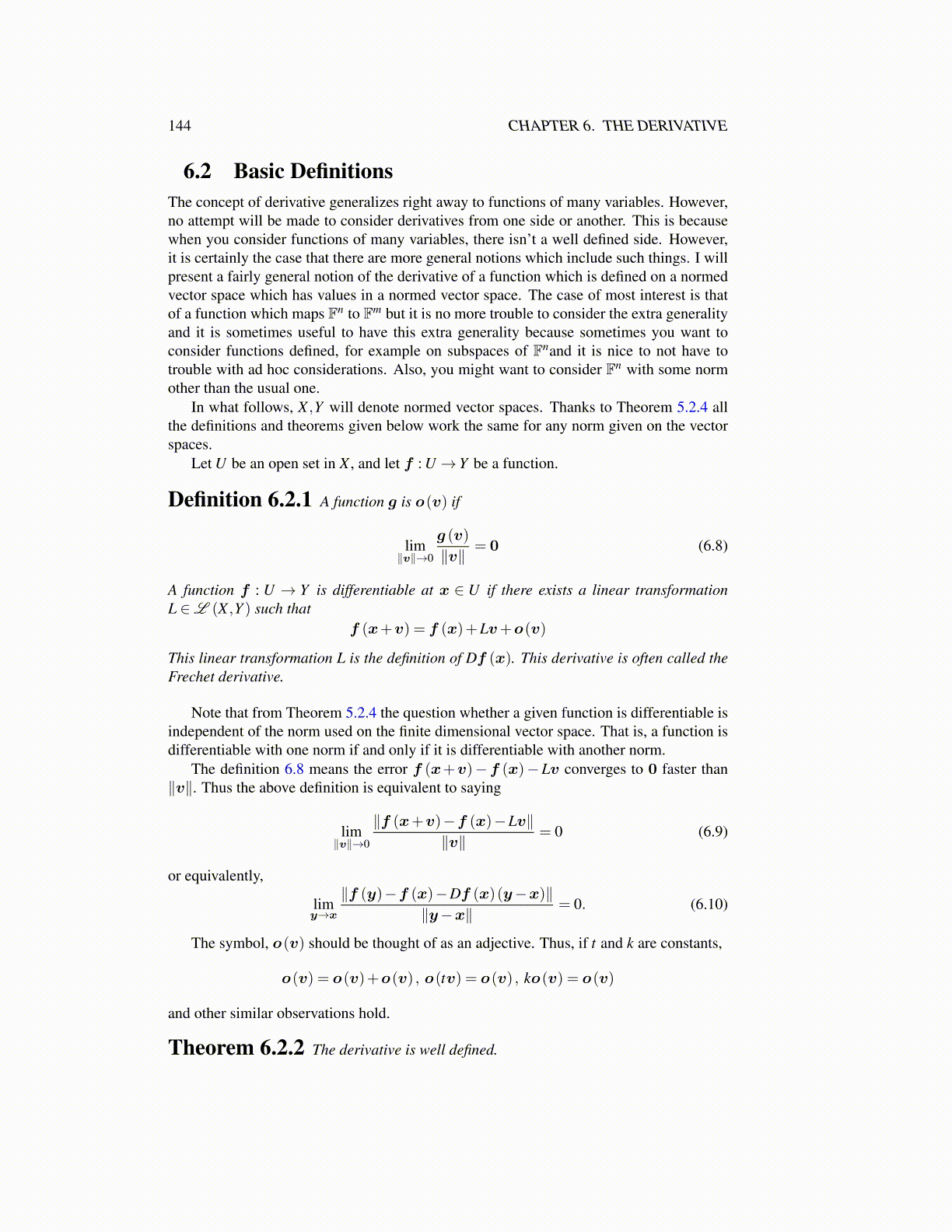
144 CHAPTER 6. THE DERIVATIVE
6.2 Basic DefinitionsThe concept of derivative generalizes right away to functions of many variables. However,no attempt will be made to consider derivatives from one side or another. This is becausewhen you consider functions of many variables, there isn’t a well defined side. However,it is certainly the case that there are more general notions which include such things. I willpresent a fairly general notion of the derivative of a function which is defined on a normedvector space which has values in a normed vector space. The case of most interest is thatof a function which maps Fn to Fm but it is no more trouble to consider the extra generalityand it is sometimes useful to have this extra generality because sometimes you want toconsider functions defined, for example on subspaces of Fnand it is nice to not have totrouble with ad hoc considerations. Also, you might want to consider Fn with some normother than the usual one.
In what follows, X ,Y will denote normed vector spaces. Thanks to Theorem 5.2.4 allthe definitions and theorems given below work the same for any norm given on the vectorspaces.
Let U be an open set in X , and let f : U → Y be a function.
Definition 6.2.1 A function g is o(v) if
lim∥v∥→0
g (v)
∥v∥= 0 (6.8)
A function f : U → Y is differentiable at x ∈ U if there exists a linear transformationL ∈L (X ,Y ) such that
f (x+v) = f (x)+Lv+o(v)
This linear transformation L is the definition of Df (x). This derivative is often called theFrechet derivative.
Note that from Theorem 5.2.4 the question whether a given function is differentiable isindependent of the norm used on the finite dimensional vector space. That is, a function isdifferentiable with one norm if and only if it is differentiable with another norm.
The definition 6.8 means the error f (x+v)−f (x)−Lv converges to 0 faster than∥v∥. Thus the above definition is equivalent to saying
lim∥v∥→0
∥f (x+v)−f (x)−Lv∥∥v∥
= 0 (6.9)
or equivalently,
limy→x
∥f (y)−f (x)−Df (x)(y−x)∥∥y−x∥
= 0. (6.10)
The symbol, o(v) should be thought of as an adjective. Thus, if t and k are constants,
o(v) = o(v)+o(v) , o(tv) = o(v) , ko(v) = o(v)
and other similar observations hold.
Theorem 6.2.2 The derivative is well defined.